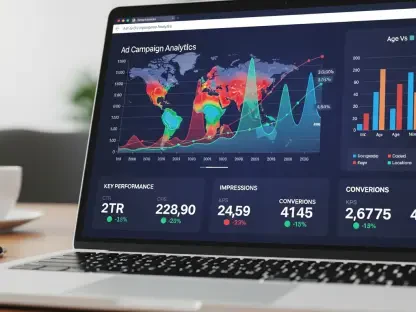The digital advertising industry stands at a crossroads as AI technology redefines interactions with audiences during live sports events. PubMatic’s collaboration with FanServ introduces an AI-driven Live Sports Marketplace, signifying a key development in programmatic advertising. This technology allows advertisers to target specific, emotionally charged moments during live broadcasts, enabling a more tailored approach to reaching sports fans. This shift aligns with broader industry trends, reflecting increasing digital engagement, especially in sports advertising.
Overview of the Digital Advertising Industry
The digital advertising sector is a dynamic and essential component of modern marketing strategies, increasingly influenced by technological advancements. The industry encompasses various segments, including search, social media, and video advertising, with major players like Google, Facebook, and Amazon dominating the market. Regulations such as data protection laws and advertising standards play critical roles, ensuring ethical practices and safeguarding consumer interests. As technology evolves, advertisers must continuously adapt to maintain compliance while optimizing their strategies for maximum impact.
Industry Trends and Technological Advancements
Key Trends Shaping Digital Advertising
Emerging technologies are fundamentally reshaping the digital advertising landscape. With the rise of programmatic buying and AI, advertisers now have the ability to deliver highly personalized content. Consumer behaviors are also changing, with audiences increasingly seeking engaging, real-time content delivered via digital platforms. These trends provide new opportunities for advertisers to connect with their audiences in meaningful ways, allowing for innovative and targeted advertising strategies that prioritize relevance and engagement.
Market Insights and Growth Projections
The digital advertising market is on a growth trajectory, with significant increases in ad spending projected over the next few years. According to industry data, real-time sports advertising is experiencing a particularly rapid expansion, driven by the shift from traditional television to connected digital experiences. Current projections indicate a rise in market share for digital platforms, suggesting robust growth potential for advertisers who can leverage these evolving dynamics to their advantage.
Challenges in the Digital Advertising Landscape
The digital advertising industry faces several challenges, including technological limitations, changing regulations, and market saturation. The complexity of managing vast amounts of data and ensuring precise targeting can overwhelm traditional systems. However, advancements such as AI and machine learning offer potential solutions, promising greater efficiency and accuracy in ad placements. Strategies for overcoming these obstacles include investing in technology infrastructure and prioritizing data security and compliance.
Regulatory Landscape and Compliance
The regulatory environment for digital advertising is continually evolving, with significant changes impacting how advertisers operate. Compliance with new standards, such as privacy regulations and advertising guidelines, is paramount in maintaining consumer trust and legal standing. Security measures are becoming increasingly essential to protect both consumer data and the integrity of advertising processes. Understanding and adapting to these regulatory shifts is crucial for industry players aiming to thrive in this tightly regulated space.
The Future of Digital Advertising
Looking ahead, emerging technologies and market disruptors promise to shape the future of digital advertising significantly. Innovations such as blockchain technology, virtual reality, and augmented reality are expected to offer new avenues for engagement. The influence of regulation, combined with global economic conditions, will also play a pivotal role in the strategic direction of the industry. Companies prepared to harness these factors will be well-positioned to capitalize on future growth opportunities.
Conclusion and Strategic Recommendations
This analysis indicates that AI-driven advancements are crucial for shaping the future of digital advertising, especially in real-time sports marketing. As technologies continue to evolve, advertisers should focus on adopting AI and machine learning tools to enhance targeting precision and campaign effectiveness. Investing in scalable infrastructures and staying agile in adapting to regulatory changes will further bolster market positioning. Strategic partnerships, such as PubMatic’s alliance with FanServ, exemplify how collaboration can amplify success in this competitive landscape.









